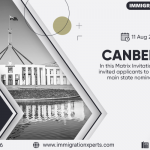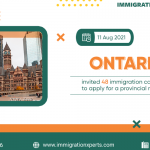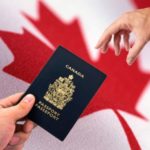The Provincial Nominee Program (PNP) is one of the most practical routes to Canadian permanent residence when your skills, work experience, or business plans match what a province needs.
Each province and territory runs its own PNP streams, so the right path for you depends on where you want to settle and the skills you bring.
This guide walks you through the process step by step and gives practical tips to help you avoid common mistakes.
Check Your Skilled Assessment & Eligibility
What is the PNP?
In simple terms, provinces and territories across Canada can nominate people who want to live and work in that province. These nominations are granted through specific streams designed to meet local labour market needs — for example, skilled workers, international graduates, in-demand occupations, or entrepreneurs. Note that Québec operates its own separate selection system.
Two routes: Express Entry-linked vs non-Express Entry
There are two major routes through the PNP:
- Express Entry-linked (enhanced): If the province issues an enhanced nomination, it adds significant points to your federal Express Entry profile. This usually leads to an Invitation to Apply (ITA) for permanent residence.
- Non-Express Entry (base): A base nomination requires you to apply for permanent residence to the federal immigration authority outside the Express Entry system.
Knowing which route your chosen provincial stream uses matters because it changes the next steps after nomination.
Step 1 — Choose the right province and stream
Start by deciding where you want to live. Then, identify the stream that best matches your profile. Provinces often offer multiple streams — some target specific occupations, others favor recent graduates, and some are aimed at entrepreneurs or people with job offers.
Pick a stream that aligns closely with your education, work experience, and language ability. Choosing the wrong stream wastes time and could lead to refusal.
Step 2 — Check eligibility and gather documents
Typical requirements include:
- Work experience in a qualifying occupation.
- Language test results (for example, English or French language tests).
- Educational credential assessment if you studied outside Canada.
- A valid job offers for streams that require one.
- Police certificates and medical exams (usually requested at the federal stage).
Gather documents early. Credential assessments, police checks, and language test bookings can take several weeks — sometimes months. Preparing ahead avoids unnecessary delays.
Step 3 — Apply to the province
Each province has its own application process. Many offer an online portal, while some use paper forms. Carefully follow the province’s checklist and submit all required documents.
If your application is approved, the province will issue a nomination certificate. For Express Entry-linked nominations, you’ll need to update your federal profile to show the nomination and receive extra points.
Step 4 — Apply for permanent residence to the federal government
After nomination, there are two possibilities:
- Enhanced (Express Entry) nomination: Update your Express Entry profile. After the nomination is recorded, you should receive an ITA in an upcoming Express Entry draw. When you get the ITA, submit the full PR application within the given deadline.
- Base (non-Express Entry) nomination: Submit a separate permanent residence application to the federal immigration authority using your provincial nomination certificate.
The federal stage will include medical exams, police checks, and final admissibility screening.
Step 5 — Wait for the decision and prepare to arrive
Processing times vary by province and by whether the nomination was Express Entry-linked or not. When the federal government approves your application, you’ll receive instructions on landing in Canada. Provinces commonly provide settlement supports and resources once you’re approved, which helps with housing, job search, and community integration.
Practical tips to improve your chances
- Match your application to the stream precisely. Use the same job titles and duty descriptions that the province expects.
- Make documents clear and complete. A tidy, well-ordered application reduces the chance of delays.
- Start long-lead items early. ECAs and police certificates take time.
- Prefer enhanced streams when possible. They tend to be faster and more predictable.
- Keep track of intake windows and invitations. Some streams open only at specific times or require registration.
- Keep copies of everything. Save PDFs and a short table of contents for each application.
Check Your Skilled Assessment & Eligibility
Final thoughts:
The PNP is a flexible and powerful pathway because provinces design streams around real, local labour needs. If your skills match a provincial demand and your paperwork is solid, the PNP can be one of the most effective routes to Canadian permanent residence. Prepare thoroughly, pick the right stream, and stay organized.
Ready to start your journey? Take the first step today and explore the Canada Provincial Nominee Program that best fits your skills and goals.
Email: info@immigrationxperts.com
Call us: +91-9999467686, +91-8447-696555
FAQs: Apply for Canada Provincial Nominee Program
Can I apply to more than one province?
You can express interest in multiple provinces through your federal profile, but direct provincial applications usually require you to follow that province’s rules. Check each province’s guidance.
Do all streams require a job offer?
No. Some streams prioritize job offers, while many others select candidates based on occupation, experience, or recent graduation from a local institution.
How long does the PNP process take?
Processing times vary widely. Expect several months at minimum for provincial nomination, and additional months for federal processing. Plan ahead and track timelines carefully.






